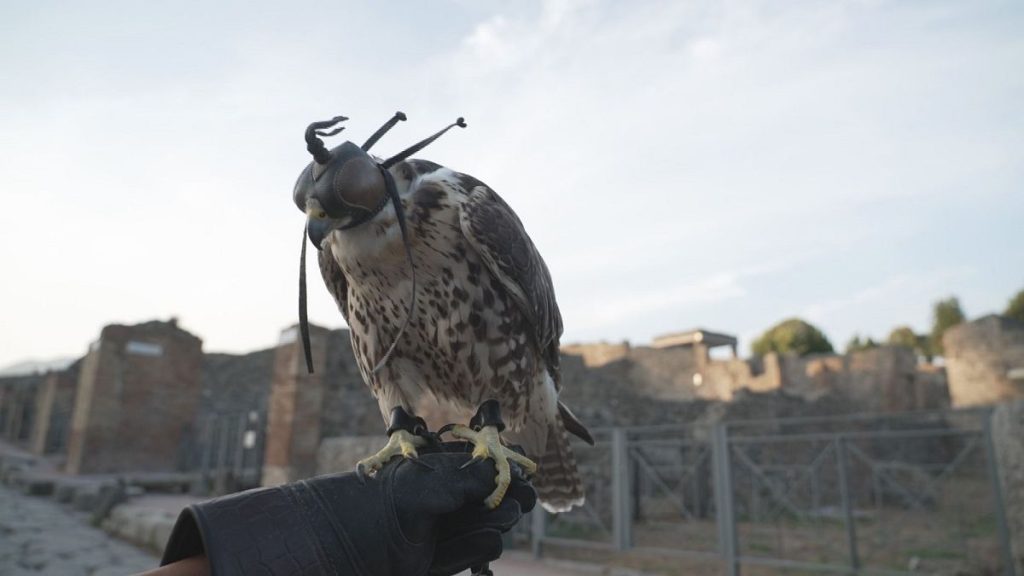Gianna and Arya are two of the ten birds of prey that have been tasked with protecting the Roman ruins of Pompeii from pesky pigeons. These birds have been patrolling the archaeological park at least three times a week for the past two years. The COVID lockdown in 2020 resulted in a higher number of pigeons nesting in the park, driving away other species and posing a risk to the archaeological excavations with their corrosive guano. In response to this issue, the Archaeological Park of Pompeii has implemented an ecological approach to protect the fragile heritage site.
The closure of the park during the COVID lockdown in 2020 led to an increase in the number of pigeons nesting in the archaeological park of Pompeii. These pigeons posed a threat to the Roman ruins with their particularly corrosive guano, driving away other species and endangering the archaeological excavations. In order to address this issue, a team of ten birds of prey, including Gianna and Arya, have been patrolling the park at least three times a week for the past two years. This proactive approach aims to protect the fragile heritage site from the damaging effects of the pigeon population.
Gianna and Arya are part of a team of birds of prey that have been trained to protect the Roman ruins of Pompeii from pesky pigeons. These birds patrol the archaeological park at least three times a week, driving away the pigeons and preventing them from nesting in the area. The closure of the park during the COVID lockdown in 2020 resulted in a higher number of pigeons nesting, posing a risk to the archaeological excavations with their corrosive guano. To combat this issue, the Archaeological Park of Pompeii has implemented an ecological approach to protect the fragile heritage site.
The Archaeological Park of Pompeii has implemented an ecological approach to protect the Roman ruins from the threat posed by pesky pigeons. The closure of the park during the COVID lockdown in 2020 led to an increase in the number of pigeons nesting in the area, driving away other species and endangering the archaeological excavations with their corrosive guano. In response to this issue, a team of ten birds of prey, including Gianna and Arya, have been patrolling the park at least three times a week for the past two years. This proactive approach aims to safeguard the fragile heritage site from the damaging effects of the pigeon population.
Gianna and Arya are two of the birds of prey that have been trained to protect the Roman ruins of Pompeii from pesky pigeons. These birds have been patrolling the archaeological park at least three times a week for the past two years, driving away the pigeons and preventing them from nesting in the area. The closure of the park during the COVID lockdown in 2020 resulted in a higher number of pigeons nesting, posing a risk to the archaeological excavations with their corrosive guano. In order to combat this issue, the Archaeological Park of Pompeii has implemented an ecological approach to protect the fragile heritage site.
In conclusion, Gianna and Arya are part of a team of birds of prey that have been tasked with protecting the Roman ruins of Pompeii from pesky pigeons. These birds have been patrolling the archaeological park at least three times a week for the past two years, driving away the pigeons and preventing them from nesting in the area. The closure of the park during the COVID lockdown in 2020 led to an increase in the number of pigeons nesting, posing a risk to the archaeological excavations with their corrosive guano. In response to this issue, the Archaeological Park of Pompeii has implemented an ecological approach to safeguard the fragile heritage site.


